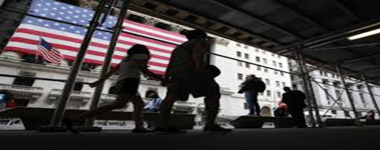by Joseph M. Firestone, New Economic Perspectives
This post continues my series evaluating the fiscal responsibility/irresponsibility of the Governments of the United States (mostly the Congress, the Executive Branch, and the Federal Reserve) by Administration periods beginning in 1977 with the Jimmy Carter period. My first post explained why I chose to start my evaluation with the Carter period, and also laid out my related definitions of fiscal sustainability, and fiscal responsibility.

It explained why fiscal responsibility is closely connected to the idea of public purpose, which I’ve laid out here. I also claimed that the Government of the United States has been fiscally irresponsible in every Administration period since 1977. The remaining posts in this series, and they will be many, will document that claim with analysis.
In this second post, I begin my evaluation of the extent of fiscal responsibility or irresponsibility of the Federal Government during the Carter Administration by covering two of the primary problems reflecting public purpose, and what the Federal Government did or did not do about them with its fiscal and monetary policies. The two are: ending economic stagnation, and creating full employment at a living wage.
Replacing a stagnating economy with one operating at its full potential; closing the current output gap
The economy during the Carter period never operated at full capacity or near full capacity. Deficit and inflation reduction were emphasized above all other domestic concerns, and substantial output gaps were simply accepted as something that it was very difficult for Government to do anything about. This was true during a period in which the presidency and the Congress were both in Democratic hands with substantial majorities.
In addition, the President was able to appoint his choice to head the Federal Reserve on two occasions. During the early part of his Administration he was dealing with a Republican appointee, Arthur F. Burns, who was far from a fiscal hawk on inflation. When Burns resigned, Carter appointed G. William Miller to head the Federal Reserve. Miller was, if anything, more dovish on interest rates than Burns. But later when he moved Miller to Treasury, he appointed the fiscal hawk Paul Volcker as Federal Reserve Chairman, and in doing this shot both himself and the United States economy in the foot; condemning himself to defeat in 1980; and the economy to a multi-year recession with high levels of unemployment from 1980 – 1986.
In spite of his favorable political situation (at least until he appointed Volcker) for active deficit spending-based fiscal policy, President Carter and leaders in the other branches of Government chose to emphasize inflation moderation, rather than facilitating an economy that used its full productive capacity for the public purpose. The outcome of this orientation was characterized as “stagflation†in the popular press, and the term came to stigmatize the Carter period in Government and his Administration, in particular.

